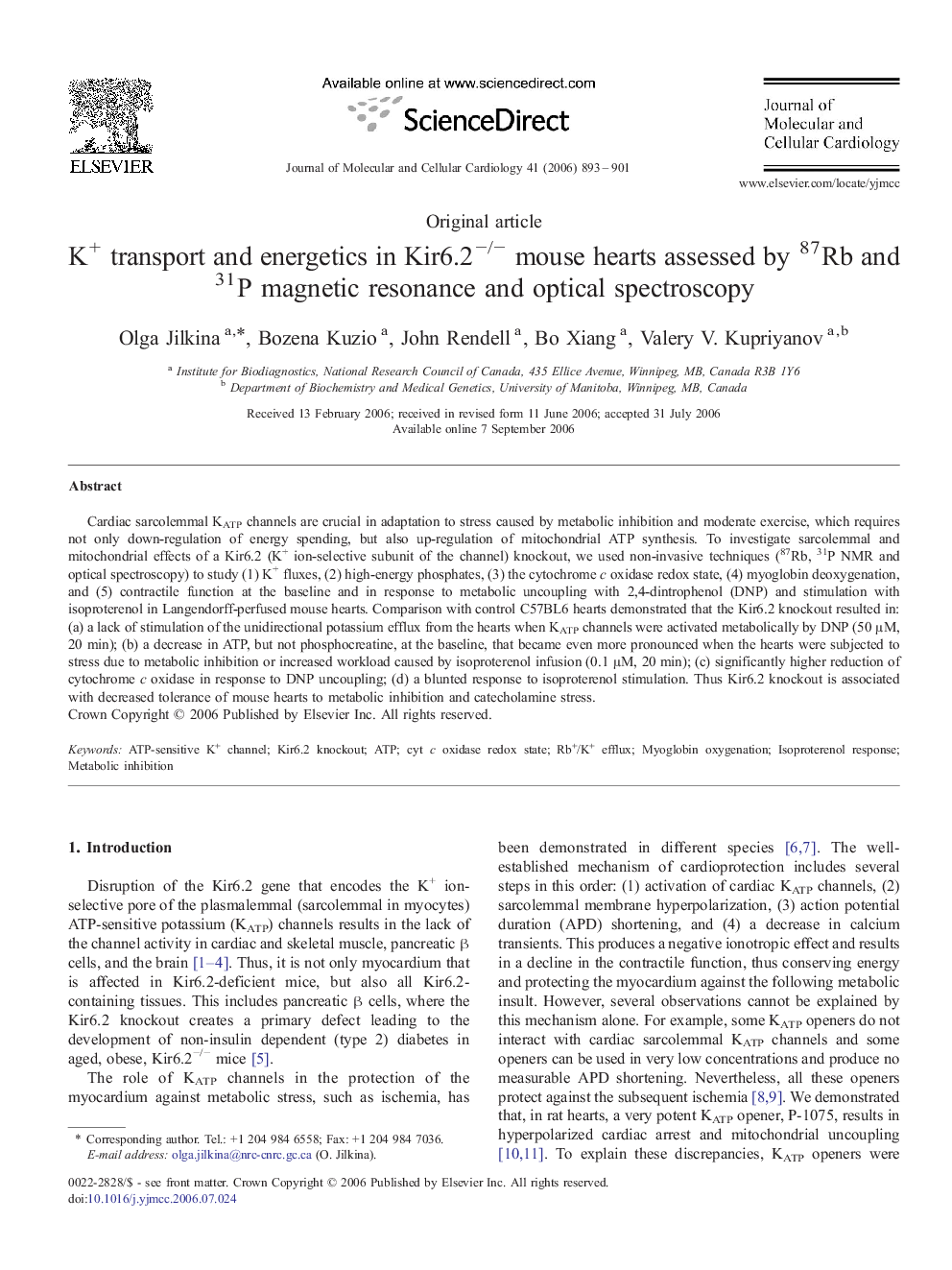| Article ID | Journal | Published Year | Pages | File Type |
|---|---|---|---|---|
| 2192181 | Journal of Molecular and Cellular Cardiology | 2006 | 9 Pages |
Cardiac sarcolemmal KATP channels are crucial in adaptation to stress caused by metabolic inhibition and moderate exercise, which requires not only down-regulation of energy spending, but also up-regulation of mitochondrial ATP synthesis. To investigate sarcolemmal and mitochondrial effects of a Kir6.2 (K+ ion-selective subunit of the channel) knockout, we used non-invasive techniques (87Rb, 31P NMR and optical spectroscopy) to study (1) K+ fluxes, (2) high-energy phosphates, (3) the cytochrome c oxidase redox state, (4) myoglobin deoxygenation, and (5) contractile function at the baseline and in response to metabolic uncoupling with 2,4-dintrophenol (DNP) and stimulation with isoproterenol in Langendorff-perfused mouse hearts. Comparison with control C57BL6 hearts demonstrated that the Kir6.2 knockout resulted in: (a) a lack of stimulation of the unidirectional potassium efflux from the hearts when KATP channels were activated metabolically by DNP (50 μM, 20 min); (b) a decrease in ATP, but not phosphocreatine, at the baseline, that became even more pronounced when the hearts were subjected to stress due to metabolic inhibition or increased workload caused by isoproterenol infusion (0.1 μM, 20 min); (c) significantly higher reduction of cytochrome c oxidase in response to DNP uncoupling; (d) a blunted response to isoproterenol stimulation. Thus Kir6.2 knockout is associated with decreased tolerance of mouse hearts to metabolic inhibition and catecholamine stress.
